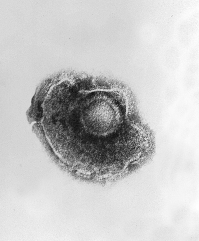Childhood Diseases: Chickenpox
Chickenpox
More than 95 percent of Americans get chickenpox by the time they reach adulthood. The disease, which is caused by a virus, is very contagious. There are four million cases of chickenpox a year, with 12,000 hospitalizations and approximately 100 deaths.
Chickenpox itself is not usually serious in children unless they are newborn, are being treated with chemotherapy for cancer, are HIV positive, or are taking steroids. In those cases, the illness can take advantage of the weakened immune system, causing severe illness and even death.
Even though children are usually victim to chickenpox, the virus that causes chickenpox is more serious when it infects adults—especially pregnant women. The symptoms are more severe in adults, the disease lasts longer, and adults are more likely to experience complications. Pregnant women who are close to giving birth can die from chickenpox.
Infectious Knowledge
Chickenpox didn't get its name because of anything having to do with chickens. The red spots people get were thought to look like chick peas. The disease got its name from the Latin word cicer, which means chick peas.
Symptoms of chickenpox include an itchy rash that starts in the scalp and spreads to the stomach, back, and face. Victims may run a fever as well. The disease is spread from coughs and runny noses, or direct contact with the fluid from sores of someone who is sick.

Electron micrograph of a Varicella (chickenpox) Virus. (Courtesy CDC/Dr. Erskine Palmer/B.G. Partin)
After infection, the virus stays in the body for life. Although a person can't get chickenpox twice, the same virus can cause another disease called shingles. Although shingles is most common in adults and people with weakened immune systems, it can occur in younger people as well.
Antigen Alert
Chickenpox is so contagious that an exposed person who isn't immune has a 70 to 80 percent change of getting sick.
Shingles occurs when the virus that causes chickenpox reactivates. Reactivation can occur in the process of normal aging or when the immune system is temporarily or permanently weakened. Symptoms include a painful, blistering rash on one side of the torso or face, pain and numbness, and sometimes tingling two to four days before the rash appears. Pain can last up to a year after the rash is gone. People with weakened immune systems and people over 80 are most susceptible to shingles.

Excerpted from The Complete Idiot's Guide to Dangerous Diseases and Epidemics © 2002 by David Perlin, Ph.D., and Ann Cohen. All rights reserved including the right of reproduction in whole or in part in any form. Used by arrangement with Alpha Books, a member of Penguin Group (USA) Inc.







